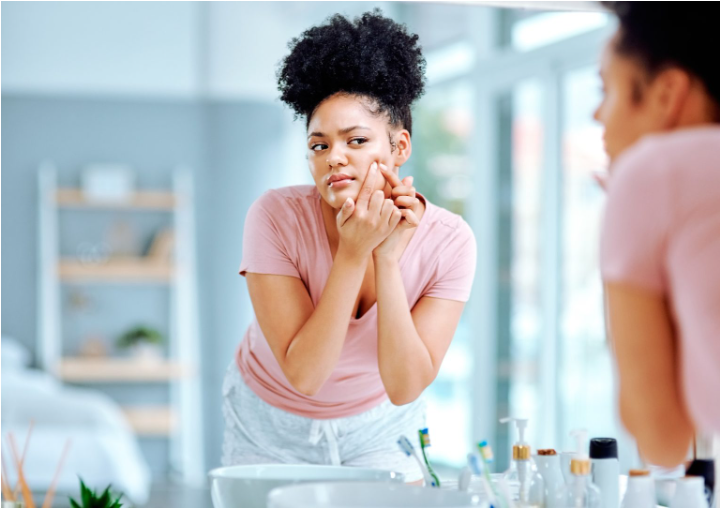Dealing With Stress Acne; Your Guide To Treating It
Many adults, at one point or another, have dealt with acne. These breakouts, while uncomfortable and in some cases painful, are a normal part of the human skin.
However, in many cases, acne breakouts may be a symptom of underlying conditions like stress and hormonal imbalance.
Stress acne is just as popular as other types of acne. This guide will educate you on all you need to know about dealing with stress acne, its cause, treatment and how it differs from other forms of acne.
What is Stress acne?
Ever wondered why your skin tends to break out more when you’re stressed? Well, the science behind this is that when the body is stressed, its stress hormones rise, triggering oil glands to produce more oil, which in turn, triggers acne.
Stress acne, unlike hormonal acne, occurs during periods of stress. On the other hand, hormonal acne causes breakouts during one’s period.
Tracking your acne triggers is the best way to differentiate between both types of acne. So note the timeline of your breakouts. Are you breaking out after a period of stress or during your monthly cycle?
If you find that you are breaking out in the same place around the same time of the month, your acne is likely caused by hormonal imbalance, especially if it takes on the form of painful cysts.
On the other hand, stress acne typically appears in the oiliest parts of the face. These stress pimples and acne lesions appear on the face’s T-zone and are usually accompanied by dilated pores, shininess, blackheads, whiteheads, and uneven or grainy skin.
Stress acne could also be accompanied by telltale signs like redness and itchiness.
Causes of Stress Acne
Just as the name describes, stress acne is caused by stress, but that’s not all. A 2017 research by The Journal of Clinical and Aesthetic Dermatology revealed that adult-onset acne was reported by 41 percent of women and that “stress was listed as a precipitating factor for acne in half of the women surveyed.
Emotional stress in the body triggers the release of the stress hormone cortisol in the body. The increased production of cortisol causes a systemic response in the body and affects the immune, digestive and reproductive system processes.
Cortisol also causes stress acne breakouts as when these levels rise; they affect the body’s ability to balance sebum, causing clogged pores and acne. More oil production equals more clogged pores, which means breakouts.
When the body undergoes increased stress, this change triggers a hormonal response, causing stress acne, resulting from an alteration to its regular hormonal pattern.
Treating Stress Acne
Like with other skin problems, the best treatment is to consult an expert. A trip to your dermatologist would have all the answers to your skin-related questions.
If you intend to work on your skin to treat skin acne, consider a topical spot treatment like salicylic acid, which can be found over the counter. Salicylic acid treatments target acne, reducing skin blemish and redness while also soothing the skin.
A cold or warm compress placed over the affected area would help reduce pain and redness to treat stress cysts. Do this for a few minutes twice daily until the spot decreases in size considerably.
Relaxing is another great way to treat stress acne. Consider meditation, yoga, and other stress-relief activities to manage your stress levels. Drink a lot of fluids, get more sleep and find new ways to relax.
In cases where stress acne happens more often not, consider changing your skincare routine by finding products that work for your skin rather than against it.
Finally, if you suspect a deeper cause like hormonal problems to be behind your stress acne, book a quick visit to your dermatologist or esthetician to discuss immediate options to speed up your recovery.






